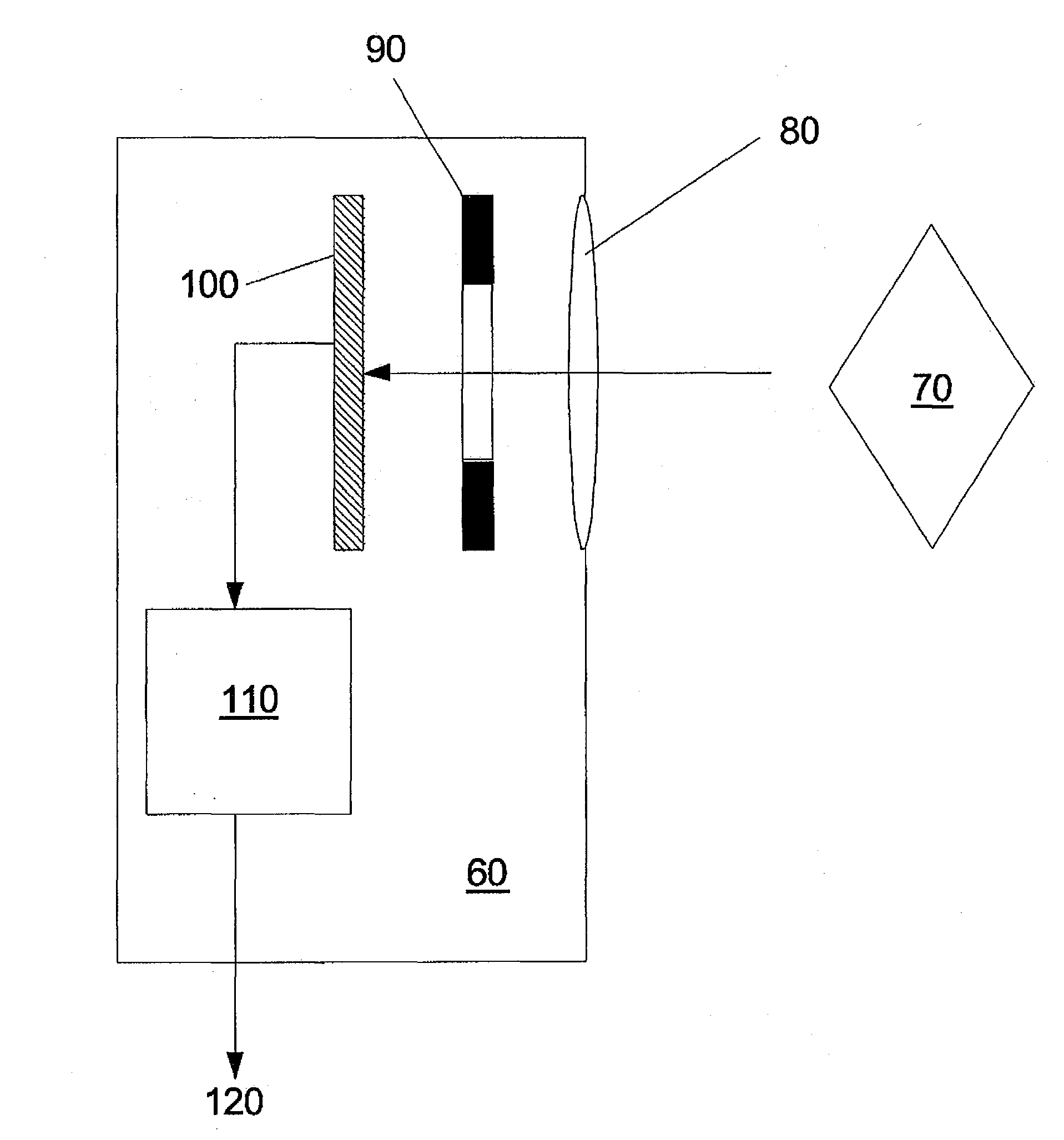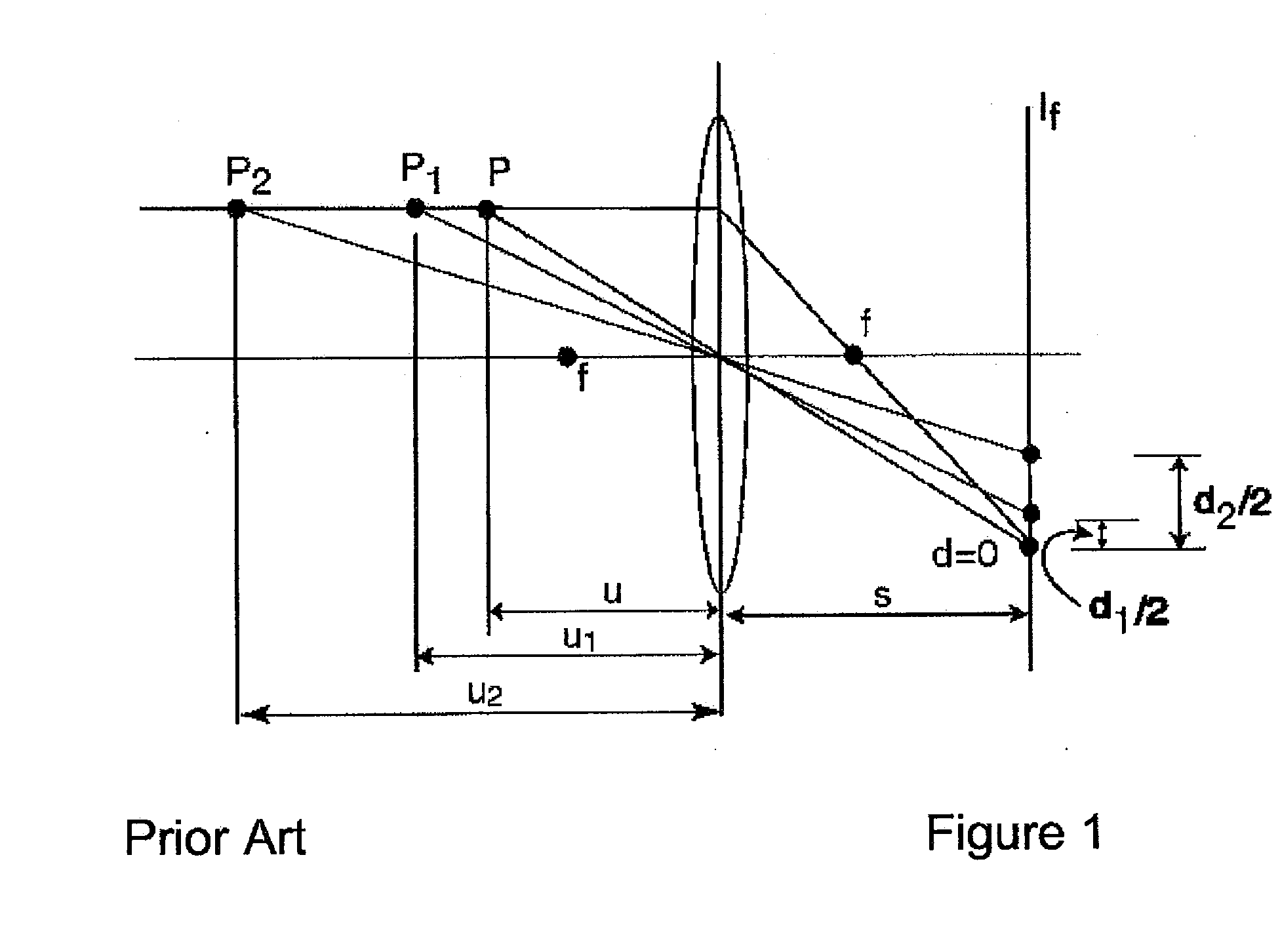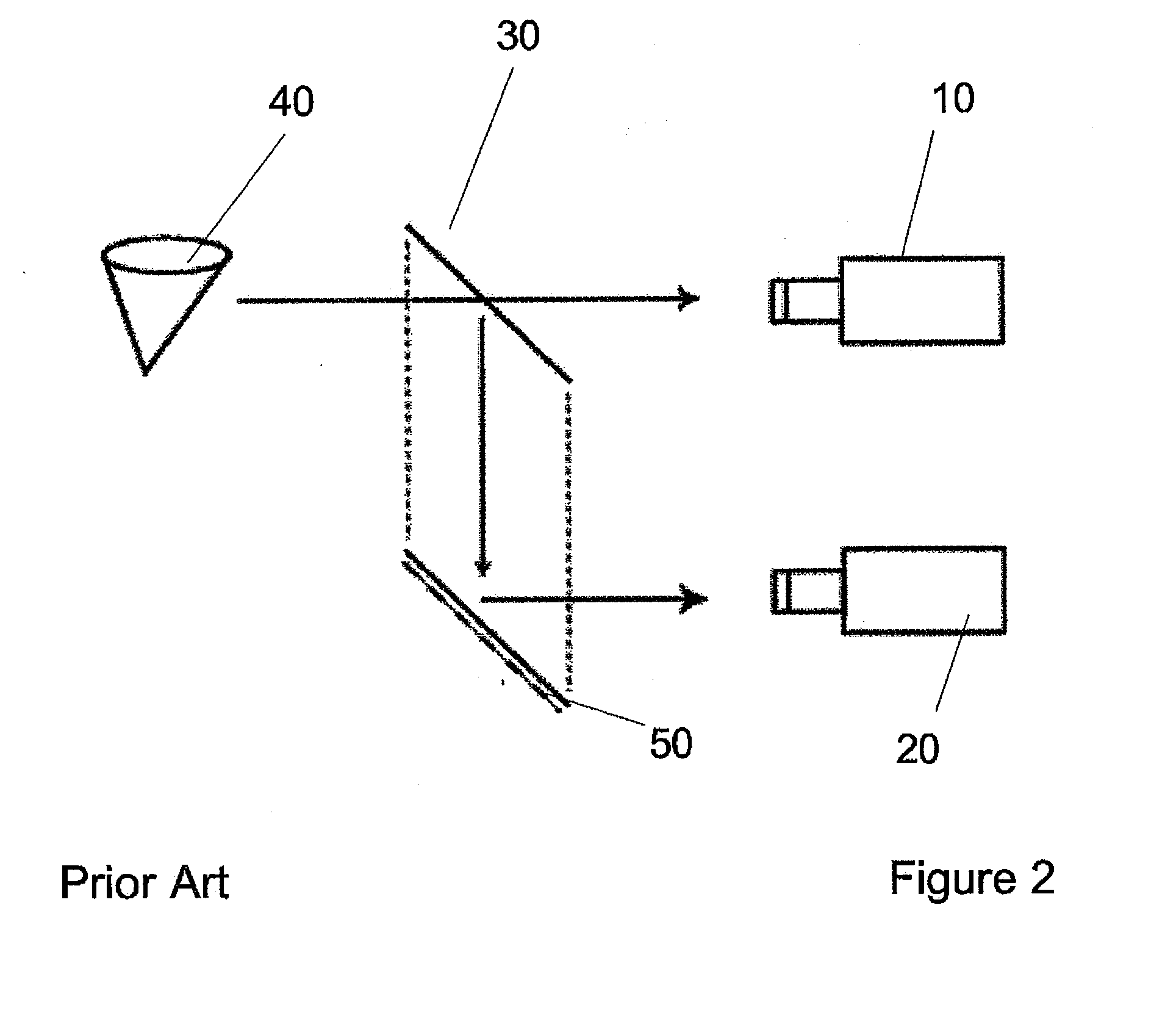Ultra-compact aperture controlled depth from defocus range sensor
a range sensor and ultra-compact technology, applied in the field of range sensors, can solve the problems of inability to estimate the level of suppression of high frequency information in the large aperture image with respect to the high frequency information content of the pinhole image, and achieve the effect of less expensiv
- Summary
- Abstract
- Description
- Claims
- Application Information
AI Technical Summary
Benefits of technology
Problems solved by technology
Method used
Image
Examples
Embodiment Construction
[0026]The present application was initially directed to mobile phones. Mobile phones are entirely unsuitable devices for incorporating prior art stereo range systems or depth from defocus systems, since they generally have only one image sensing device. Adding an extra image sensing device would be difficult because of space constraints. Moreover, in stereo systems precise camera calibration would be required which would be hampered by the fact that mobile devices are generally subjected to mechanical shocks during normal operation. Thus, the development of a system that is able to maintain the camera calibration for a pair of CCD\CMOS elements would be costly. In addition, due to factors such as dust, the level of illumination between these cameras would be uneven.
[0027]The present application provides a solution for the implementation of a range sensor within a mobile device, in which a single camera is employed in conjunction with a variable aperture. Incorporating a variable ape...
PUM
 Login to View More
Login to View More Abstract
Description
Claims
Application Information
 Login to View More
Login to View More - R&D
- Intellectual Property
- Life Sciences
- Materials
- Tech Scout
- Unparalleled Data Quality
- Higher Quality Content
- 60% Fewer Hallucinations
Browse by: Latest US Patents, China's latest patents, Technical Efficacy Thesaurus, Application Domain, Technology Topic, Popular Technical Reports.
© 2025 PatSnap. All rights reserved.Legal|Privacy policy|Modern Slavery Act Transparency Statement|Sitemap|About US| Contact US: help@patsnap.com



